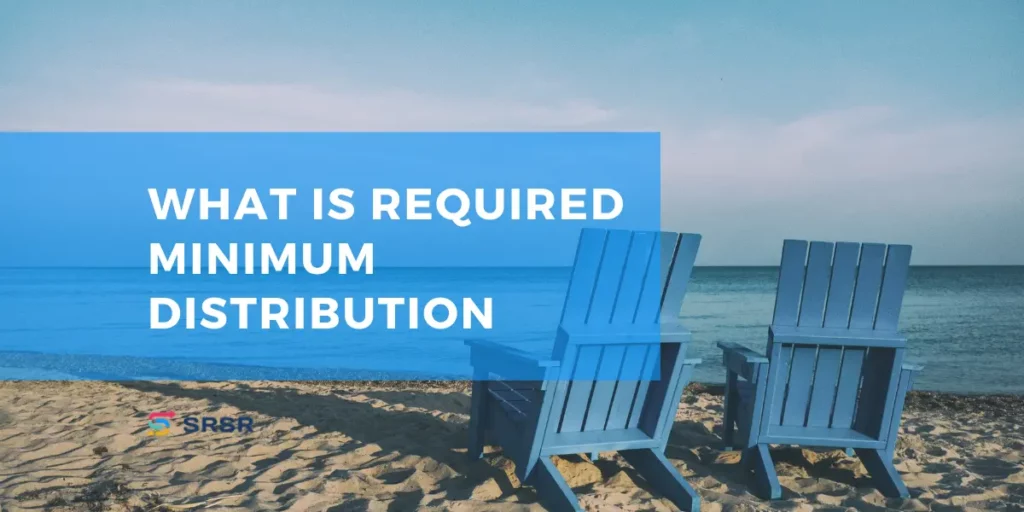Tax-advantaged retirement accounts provide excellent savings vehicles for people during their working years. But once account owners reach a certain age, the IRS requires owners of these accounts to take required minimum distributions (RMDs) each year.
This can cause a problem for some taxpayers who wish to keep their taxable income below a certain threshold. These withdrawals usually can’t be avoided. However, account owners may be able to limit the tax implications of their RMDs by using different strategies.
What is an RMD?
Once you reach a certain age, the government requires that you take withdrawals from your retirement accounts each year. While you can withdraw more than the amount required, the minimum amount that you must withdraw is called the required minimum distribution.
Some retirement accounts, like a Roth IRA, aren’t subject to the RMD requirements. However, most other types of employer-sponsored retirement accounts, including 401(k)s, 403(b)s, 457(b)s, and other types of IRAs are subject to RMD rules.
When are you required to take RMDs?
Figuring out when you’re required to take minimum distributions can be a little bit confusing, so here’s the long answer to a short question. Typically, you’re required to begin taking RMDs once you reach a certain age. For those who will turn 72 on or before December 31, 2022, your RMDs begin the year you turn 72 (but you can delay taking the RMD until April 1 of the next year, if you wish). For those who will turn 72 after December 31, 2022, your RMDs will begin the year you turn 73 (but again, for the first year, you can delay taking the initial RMD until April 1 of the following year). Beginning in 2033, required minimum distributions begin once you reach age 75.
However, there may also be exceptions to this rule. If you have an employer-sponsored retirement plan, you can delay your RMD until you retire. So if you’re still working past your RMD age, you can delay taking your RMDs from your employer-sponsored retirement accounts (as long as the plan documents allow this).
But if you own more than 5% of the business, you must still begin taking your RMDs at the required age, whether you’re retired or not. If you own 5% or less, you’re free to continue delaying RMDs until you retired.

How do I know how much my RMD is?
Whether you have one retirement account or several, your RMD amount is calculated the same way. It’s calculated using the account balance as of December 31 of the previous year. This amount is then divided by the number corresponding to your age on the IRS’s life expectancy tables in Publication 590.
For example, let’s say the value of your account was $200,000 as of December 31. You’re 74 years old. The table shows that your distribution period is 25.5.
$200,000/25.5 = $7,843.14
In this scenario, your required RMD for this year from this account would be $7,843.14.
If you do have multiple retirement accounts, each account will have its own RMD amount. Your IRA custodian or administrator should tell you what your RMD is. However, it’s your responsibility to be sure that the correct amount is distributed by the due date.
Your RMD amount doesn’t need to be taken all at once. It can be taken in multiple transactions throughout the year. However, the total amount must be taken by December 31 (or April 1 if you delay your first-year RMD).
What happens if I don’t take my RMD?
Not taking the correct required minimum distribution may seem to benefit you by keeping more money in your retirement account and keeping your taxable income low, but the IRS has strict penalties on your untaken RMD. RMDs used to be subject to a whopping 50% excise tax. However, thanks to the Secure 2.0 Act, this tax was reduced to 25% beginning in 2023.
The 25% penalty is still pretty high, but it can be reduced to 10% as long as you correct your RMD withdrawal within two years. Still, you didn’t invest money for all these years just to pay it in penalties to the IRS.
If you don’t need your RMD withdrawal amounts for your living expenses, there are other ways to take the withdrawal and avoid the IRS penalty. Some of these even give you an advantageous position for tax purposes.
Different methods of strategizing RMD withdrawals
Here are some of the most common ways to strategize your RMD withdrawals and limit RMD taxes. Each situation and person is unique, so think carefully about your short and long-term goals before deciding how you’ll handle your RMD.
1. Donate your RMD to charity
You can avoid taxes on your RMD by making a qualified charitable distribution (QCD) to a charity. Individuals can donate up to $100,000 each year tax-free, and married couples can donate up to $200,000.
Under normal withdrawal rules, required minimum distributions are taxable. However, by making a QCD directly from your retirement account to the charity of your choice, you can meet all or some of the withdrawal requirements without being subject to taxes. This option is an excellent choice. Though, especially for people who were already planning to support charities as part of their financial legacy.

2. Continue working to avoid RMD requirements
As previously discussed, you can continue working to avoid taking the RMD as long as you own ≤5%. However, this exception only applies to employer-sponsored plans, such as a company 401(k). For this type of account, you can delay withdrawals as long as you keep working. This includes, even if you’re only working part-time.
If you have other retirement accounts, such as an IRA, you will still need to take the RMD when you reach the required age, even if you’re still working.
If continuing to work is best for your situation, and you don’t wish to take the required minimum distribution from your IRAs, you may be able to convert your IRA into your employer-sponsored 401(k). Then, you will no longer need to take RMDs until you are ready to retire.
3. Convert your retirement account to a Roth IRA
Roth IRAs aren’t subject to RMD requirements until the owner dies. If you wish to continue saving money, taking your RMD from your other retirement accounts and converting them to a Roth IRA would allow you to do this. This option doesn’t avoid taxes, but you can invest your after-tax money and let it continue growing tax-free in this way.
4. Wait as long as possible to take your first RMD
You don’t have to take your first required minimum distribution until April 1 of the following year after you reach your RMD age. If you choose to delay your first RMD, you’ll need to take two RMDs the next year – one by April 1 for the previous year, then another by December 31 for the current year.
Delaying your first withdrawal also delays the taxes due. Though it can also cause you to have higher than-expected taxes. Especially when you take two RMDs in the same year. You should carefully consider your income and taxes for each year to see what is most beneficial for your situation.
4. Make an in-kind transfer
You can make an in-kind transfer by transferring shares from your retirement holdings into a brokerage account. While these transfers are taxable, doing this allows you to keep your holdings. If your investments are down, you’ll only pay taxes on the amount you transfer. You won’t be subject to capital gains tax until you sell the shares.
5. Contribute to a qualified longevity contract (QLAC)
A qualified longevity annuity contract (QLAC) is an annuity funded by qualified retirement accounts. It gives beneficiaries guaranteed income for a set period of time. Thus, helping owners avoid volatility in the stock market as well as delaying taxes.
QLAC distributions aren’t required to begin until age 85. If you have other investments or property that can provide an income stream during requirement, do this. Use your RMD to purchase a QLAC can delay taxation until your withdrawals begin. This may be especially beneficial if you expect that you’ll be in a lower tax bracket when you reach age 85 and have to begin paying taxes.
QLACs can be an excellent part of a retirement income strategy for those who have income from other sources. However, once you purchase the annuity, there’s no way to get your money back out until you begin receiving the distributions. You should ensure you have enough income from other sources before purchasing a QLAC.
6. Reorganizing your retirement accounts
Another option for strategizing your retirement accounts is to be selective about where you take your required minimum distributions from. While you must take RMDs from each employer-sponsored plan, you can aggregate all of your IRA accounts and take the total RMD from a single IRA, if you wish to do so. You can also aggregate all of your 403(b) accounts the same way and take the total RMD from a single account.
There are several reasons for doing this. You may wish to allow funds that are doing well to continue to grow. So, it may make sense to take your entire RMD from a single IRA that isn’t performing as well.
Some people also have different beneficiaries for their different accounts. If you have several IRAs and would like the beneficiaries to receive the same amount, here’s what you can do. Take more of your RMD from your larger account so that your accounts become roughly equal.
Final thoughts on maximizing your required minimum distributions
Every person’s situation is different, so each person should speak with their trusted investment or tax advisor to decide the best way to limit the impact of RMDs on their income. The age you decide to retire, the types of assets you have, and your different income streams all have an impact on how you can best benefit from your RMDs.
While you can’t avoid taking your RMD, you can strategically use the funds in multiple ways to benefit you or your loved ones over the long term, without taking a hit to your taxes. Understanding how RMDs work is one of the many things you should do before you retire. They can have a major impact on your income, taxes, and overall retirement strategy.

